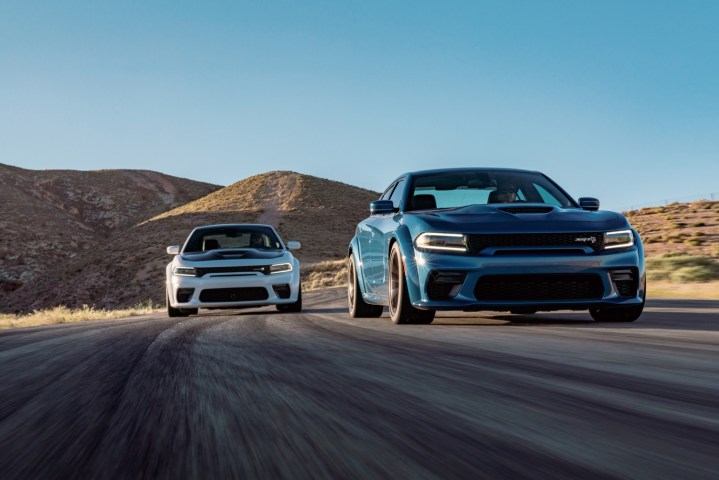
Car thieves in America have a need for speed, according to a recent study carried out by the Highway Loss Data Institute (HLDI). The Hemi-powered Dodge Charger and the 700-plus-horsepower Dodge Challenger Hellcat top the list of the most stolen cars in the United States.
Dodge’s modern-day muscle cars are about five times more likely to get stolen than the average car; thieves evidently have good taste. The Dodge Durango, the Chrysler 300, and two additional variants of the Charger also appear on the list of America’s 20 most stolen cars. Nameplates not made by the Fiat-Chrysler group include the Infiniti Q50, which occupies the third spot, the Mercedes-Benz S-Class, Audi A7, and Land Rover’s Range Rover. Luxury is coveted.
Thieves like pickup trucks, too. The GMC Sierra, the Chevrolet Silverado, and the Nissan Titan all make an appearance on the top-20 list. And yet, the Ram 1500 and the Ford F-Series — America’s best-selling vehicle for decades — both buck this trend. The HDLI explained thieves don’t always steal a car because they like it; they also target models they know are easy to get away in. Trucks made by Ram and Ford might be more difficult to steal than those manufactured by General Motors.
While luxury sedans are in hot demand among America’s car-stealing population, the rear-wheel-drive BMW 3 Series is the least likely car to be stolen in the United States. Thieves have also decided the grand theft auto potential of the Buick Encore, the Subaru Legacy, the Volkswagen Beetle, the Lexus RX, and the Mazda MX-5 Miata is low. If you park a Miata and a Challenger Hellcat side by side, statistics show a car thief is more likely to drive off in the tire-roasting muscle car.
Interestingly, the HLDI concluded electric vehicles are less likely to be stolen than piston-powered cars. The Tesla Model S and the Tesla Model X are right behind the 3 Series at the bottom end of the scale. Researchers speculate that’s because they’re often parked near their owner’s house, in a garage, or near a charging station, and chargers are usually found in high-traffic areas. Breaking into a car left in the Starbucks parking lot is more difficult than stealing one from a back alley. Security features like Tesla’s Sentry Mode also play a role in deterring thefts.
Editors' Recommendations
- Watch this famous musician fly in a car with wings
- EV warranties aren’t like those for non-electric cars. Here’s what you should know
- The 6 best remote car starters in 2024
- Nvidia is bringing ray tracing and DLSS 3 to your car
- Unreal Engine just demoed ‘film-quality’ visuals running in real time




